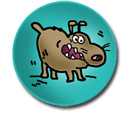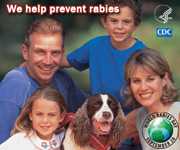Keeping bats out of your house

The big brown bat is found throughout most of the United States and Canada. It feeds principally on beetles.
Some bats live in buildings, and there s no reason to evict them if there is little chance for contact with people.
Bats must not be allowed into your home. It s best to contact an animal-control or wildlife conservation agency for assistance with “bat-proofing” your home. If you choose to do the “bat-proofing” yourself, here are some suggestions.
Carefully examine your home for holes that might allow bats entry into your living quarters. Caulk any openings larger than a quarter-inch by a half-inch. Use window screens, chimney caps, and draft-guards beneath doors to attics, fill electrical and plumbing holes with stainless steel wool or caulking, and ensure that all doors to the outside close tightly.
Prevent bats from roosting in attics or buildings by covering outside entry points. Observe where the bats exit at dusk and keep them from coming back by loosely hanging clear plastic sheeting or bird netting over these areas. Bats can crawl out and leave, but cannot re-enter. When all the bats are gone, the openings can be permanently sealed.
Avoid doing this from May through August. If there are young bats in your attic, many of them can t fly and keeping the adults out will trap the young who will die or try to make their way into your rooms.
Most bats leave in the fall or winter to hibernate, so these are the best times to “bat-proof” your home.
For more information about “bat-proofing” your home, contact Bat Conservation International.
Related Links
The photos that appear on this site were provided courtesy of Bat Conservation International, Inc. (BCI) and were used with permission. The use of these photos and the shared development of this brochure do not imply endorsement of BCI's views, services, or products by the Public Health Service or the U.S. Department of Health and Human Services.
- Page last reviewed: April 22, 2011
- Page last updated: April 22, 2011
- Content source:





 ShareCompartir
ShareCompartir